15 Apr OWASA resumes annual mowing and clearing of easements to help prevent wastewater overflows
OWASA is beginning the annual mowing, clearing and inspection of its sanitary sewer easements. This work, which includes trimming trees and shrubs where needed, is intended to:
- help prevent roots from entering cracks in sewers. When roots get into a sewer to get the water and nutrients in wastewater, the roots can grow inside the pipe and block the flow of wastewater, causing an overflow from a manhole. Preventing wastewater overflows is one of OWASA’s highest priorities.
- ensure safe, timely access for inspections, maintenance and repair work including emergency responses to wastewater overflows when needed.
Most of OWASA’s easements are 30 feet wide, but usually OWASA clears about 20 feet of the easement (about 10 feet on each side of a sewer pipe).
OWASA’s work on easements will start in the north part of Chapel Hill this year. OWASA normally mows its sewer easements once a year.
Information about easements is available on the OWASA website, www.owasa.org, by clicking here or going to the website and searching for easement information. OWASA will also be glad to mail a brochure with more information about sewer easements at the request of any customer or property owner.
Customers are encouraged to contact OWASA at 919-537-4292 or info@owasa.org to check whether there is an OWASA sewer or easement on the customer’s property, and if a customer has trees, shrubs, fencing, structures, etc. which may need to be relocated from an easement.
Some plantings, such as shallow-rooted trees and shrubs, may be allowed in the outer part of an easement with OWASA’s approval of a planting plan. Please click here for more information or do a search on the OWASA website for planting.
Background information
What is an OWASA easement?
An OWASA easement is a defined area where OWASA has the right to:
- keep clear access.
- do maintenance, repairs, inspections, improvements and renovations.
- install water or sewer pipes, manholes and related items.
The presence of an easement does not change the ownership of the underlying land, but the owner’s use of an easement area is limited by OWASA’s right to do clearing, repairs, maintenance, inspections, improvements and other work as noted above.
Does OWASA own or maintain drainage or stormwater easements?
No. OWASA has easements for drinking water, sanitary sewer (wastewater) and reclaimed water facilities. However, in some locations, an easement may have been created for multiple purposes such as stormwater, energy and/or communications as well as OWASA services.
Why are most sewers located within easements?
Many public sewers are installed in easements outside of street right-of-way. Because most sewers operate with the natural force of gravity, they have a downhill slope and are therefore often installed in low areas such as ravines and along creeks.
The location of an easement is normally recorded in the County Registry of Deeds with a surveyor’s document showing the boundary of the easement. Property owners are encouraged to check their land records to see whether and where their property may include utility easements.
In many but not all cases, an easement goes along the rear or side boundary of two properties so that each of the adjacent lots includes an easement area 15 feet wide. Sewer pipes and manholes are usually in the approximate center of an easement.
Citizens are invited to contact OWASA’s Water Distribution and Wastewater Collection Systems Department at 919-537-4292 to check whether there is an OWASA sewer on the citizen’s land. The presence of an OWASA sewer is also indicated by manholes with covers marked “sanitary sewer” or “OWASA.”
Most public water lines are in street right-of-way rather than in easements across private property. However, some water pipes are in off-street easements, which OWASA also keeps clear by mowing, trimming, etc.
For more information
Sherman Betts, Crew Supervisor, 919-537-4288 or sbetts@owasa.org
Nick Rogers, Assistant Manager, Water Distribution and Wastewater Collection Systems, 919-537-4269 or nrogers@owasa.org
Randy Horton, Manager, Water Distribution and Wastewater Collection Systems, 919-537-4280 or rhorton@owasa.org



